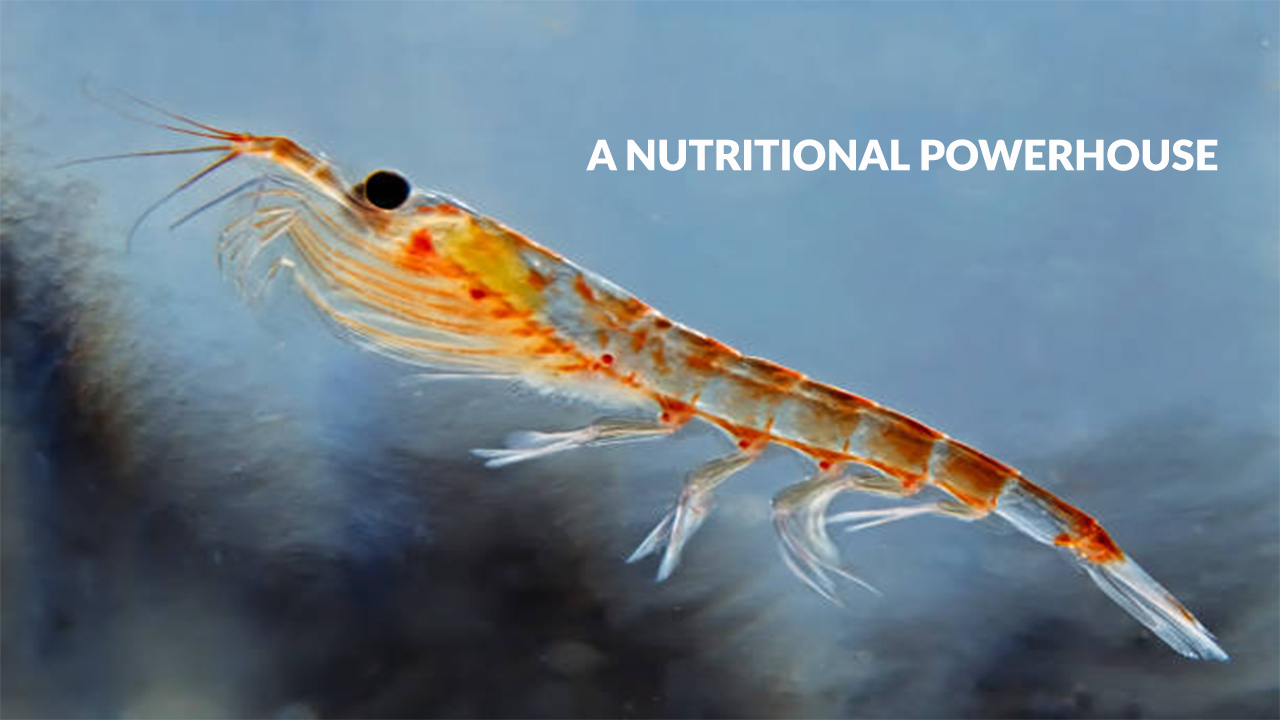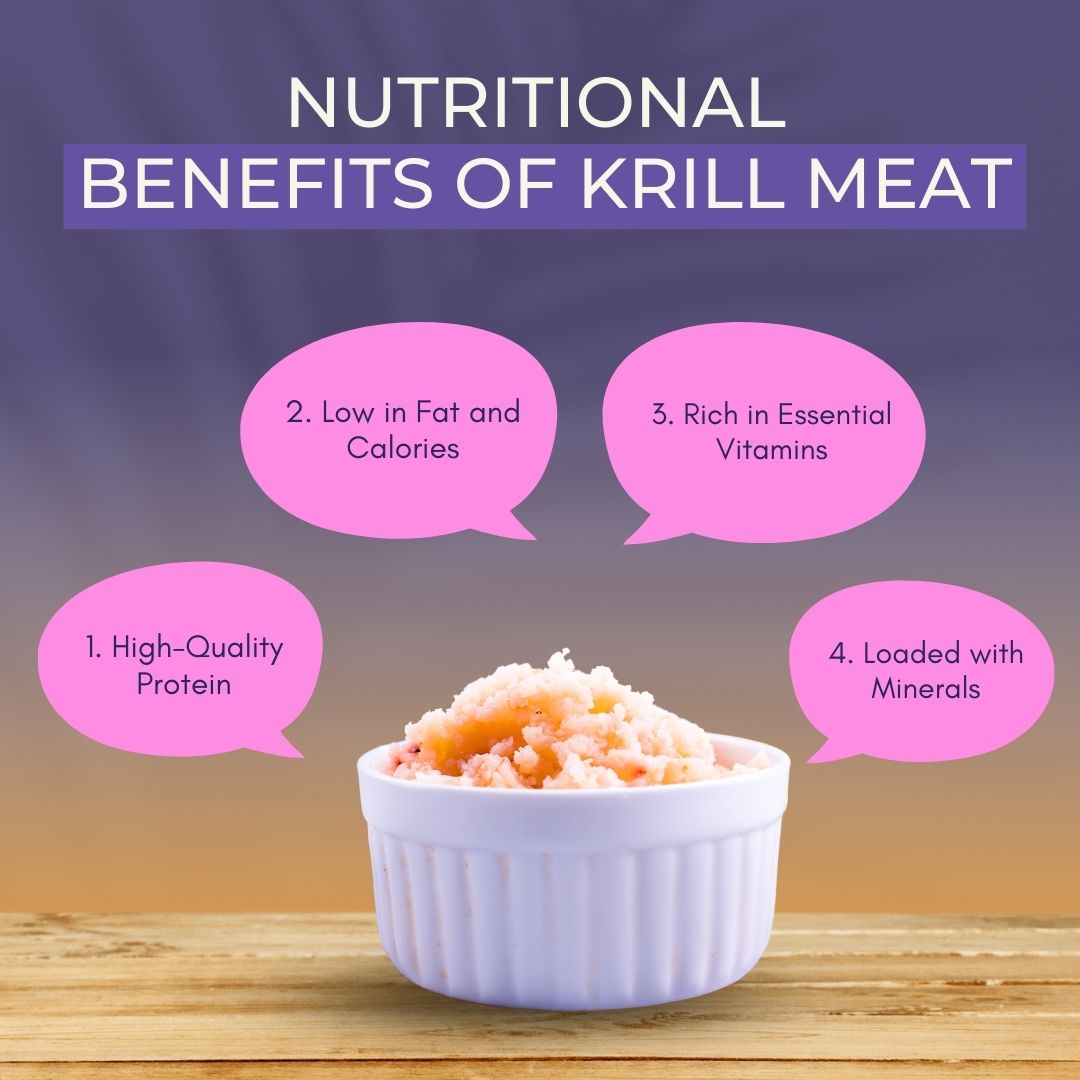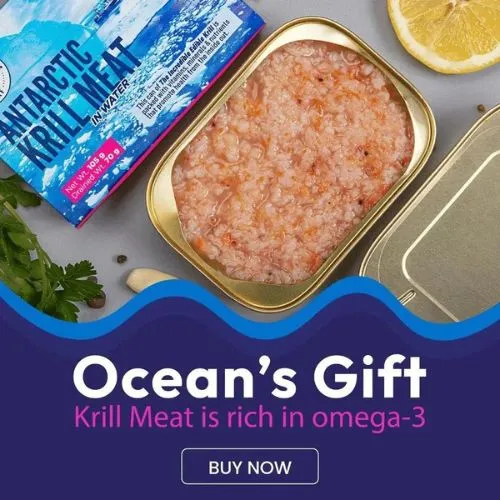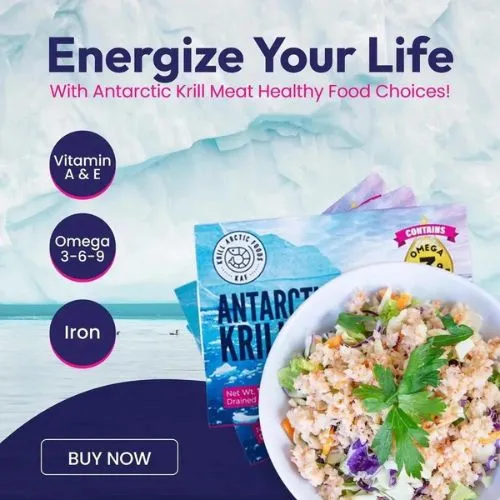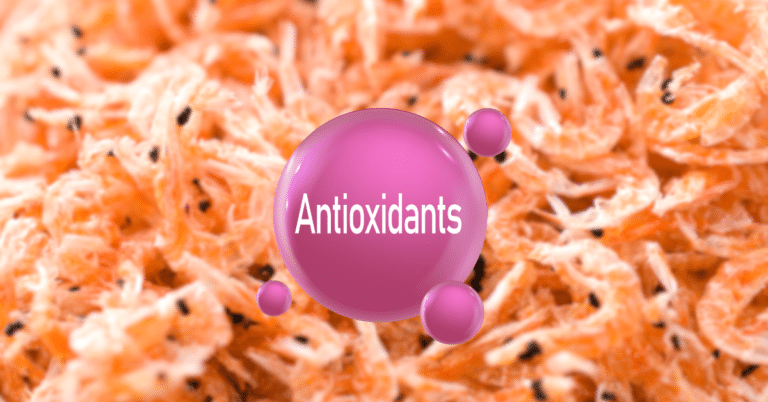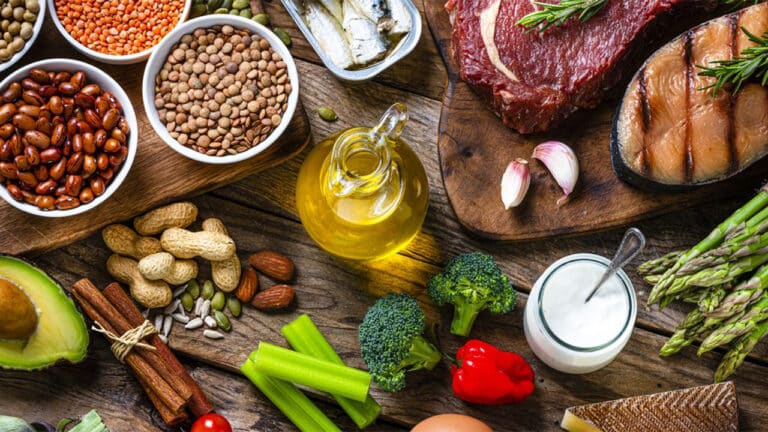We often believe that bigger means better bigger fish, bigger portions, bigger nutrition. But krill proves that small can be mighty. These tiny crustaceans, found in the cold waters of the Antarctic, pack more nutritional power than many of the seafood giants we know today. While salmon, tuna, and shrimp dominate menus, krill quietly outshines them with its superior omega-3s, highly digestible protein, and astaxanthin one of the most powerful antioxidants in nature.
What makes krill different isn’t just what it contains, but how efficiently the body absorbs its nutrients. Unlike fish oil, krill’s omega-3s are bound to phospholipids, its protein is highly bioavailable, and thanks to astaxanthin, krill naturally protects its delicate oils from oxidation, keeping them fresh without added preservatives.
So why hasn’t krill become a household name? Simply put, it has been overlooked until now. As more people search for nutrient-dense, sustainable seafood, krill is finally stepping into the spotlight. In this article, we’ll explore why krill is nutritionally superior, how it compares to other seafood, and why it’s a smart choice.
What Makes Krill a Unique Superfood?
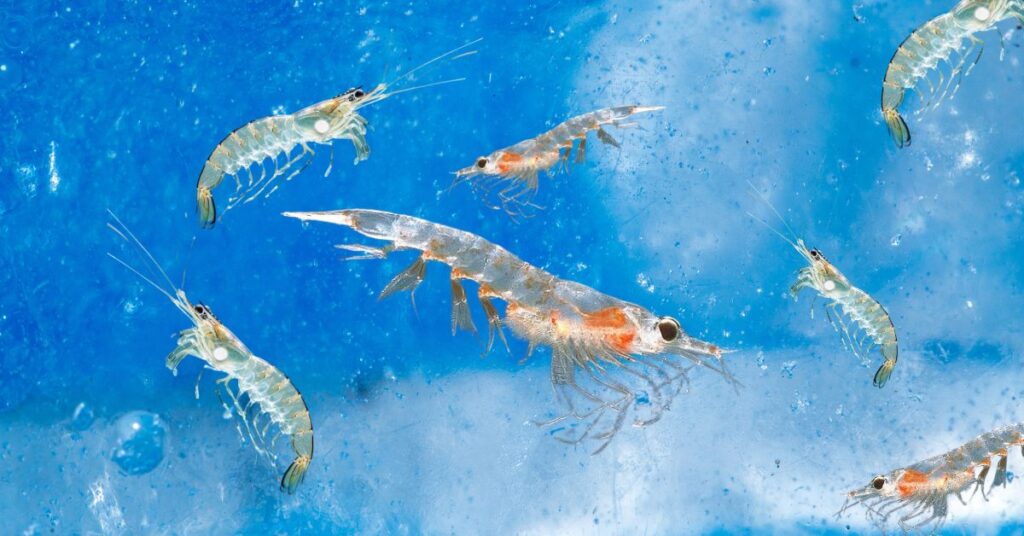
We often think of superfoods as rare, exotic ingredients found deep in jungles or high in the mountains. But one of the most powerful superfoods lives beneath the ocean’s surface krill. These tiny crustaceans might be small, but they deliver more nutrition per bite than many of the seafood staples we rely on today.
A Nutrient Powerhouse in a Tiny Package
Krill isn’t just another seafood option it’s a concentrated source of essential nutrients. It packs high-quality protein, omega-3s, and a powerful antioxidant called astaxanthin into one small but mighty package. Unlike larger fish, krill is lower on the food chain, meaning it naturally contains fewer contaminants like mercury and heavy metals while still providing the nutrition the body needs.
Omega-3s That Work Smarter, Not Harder
Most people know omega-3s are great for heart and brain health, but not all omega-3s are equal. The ones found in krill are bound to phospholipids, which makes them easier for the body to absorb compared to the triglyceride-based omega-3s in fish.
Protein That’s Easier to Digest and Absorb
Krill isn’t just rich in protein it’s easier for the body to digest and use. Krill’s high bioavailability means more of the protein gets used where it matters helping to build muscle, repair tissue, and support energy levels.
Astaxanthin: The Antioxidant That Sets Krill Apart
Krill contains astaxanthin, a naturally occurring antioxidant that protects cells from damage, supports the immune system, and helps reduce inflammation. Krill’s astaxanthin acts as a natural preservative, keeping its nutrients fresh and effective without the need for artificial stabilizers.
Krill vs. Other Seafood: How Does It Compare?
When it comes to seafood, most people think of salmon, tuna, shrimp, or cod. These staples have been praised for their protein and omega-3 content, but how does krill measure up? While these popular seafood options have their strengths, krill outperforms them in key areas from nutrient absorption to sustainability. Let’s break it down.
| Feature | Krill | Salmon | Tuna | Shrimp | Cod |
| Omega-3 Absorption | Highly absorbable (bound to phospholipids) | Less efficient (stored as triglycerides) | Moderate absorption | Low omega-3 content | Low omega-3 content |
| Astaxanthin (Antioxidant) | High | Moderate | Low | None | None |
| Mercury & Contaminants | Very low | Low | High (due to predatory nature) | Low to moderate (depends on farming method) | Low |
| Protein Quality | Highly digestible | High-quality | High-quality but less digestible | High-quality | High-quality but less digestible |
| Farming & Sustainability | Wild-caught under strict regulations | Often farmed, some wild | Overfished and high mercury levels | Mostly farmed (some wild) | Overfished in some regions |
| Environmental Impact | Minimal, entire krill is used | Moderate (farming and overfishing concerns) | High (overfishing and pollution) | High (farmed shrimp uses chemicals) | Moderate to high (overfishing concerns) |
| Waste & Utilization | Entire krill is used | Some waste | Some waste | Shells often discarded | Some waste |
Krill vs. Salmon: A Better Omega-3 Source
Salmon is widely known as an omega-3 powerhouse, but krill takes it a step further. While both provide essential fatty acids, the way your body processes them is different.
- Salmon’s omega-3s are stored as triglycerides, meaning they need additional processing before your body can use them.
- Krill’s omega-3s are bound to phospholipids, which are more easily absorbed, leading to better heart, brain, and joint benefits with a smaller serving.
Salmon also contains astaxanthin, the antioxidant responsible for its reddish-pink color. But here’s the catch krill has significantly more, making it a stronger source of anti-inflammatory and immune-supporting nutrients.
Krill vs. Tuna: A Cleaner, Safer Choice
Tuna is another popular seafood choice, often recommended for its high protein and omega-3 content. However, tuna comes with a downside mercury and heavy metal accumulation.
- As a large predatory fish, tuna builds up toxins over time, making frequent consumption a concern, especially for pregnant women and young children.
- Krill, being at the bottom of the food chain, feeds on microscopic algae rather than other fish, meaning it contains little to no mercury or harmful contaminants.
While tuna is an excellent protein source, krill’s protein is more digestible, meaning the body can absorb and use it more efficiently.
Krill vs. Shrimp: More Nutrients, Less Waste
Shrimp is one of the most consumed seafood options worldwide, but nutritionally, krill provides more benefits per bite.
- While both are low in fat and rich in protein, krill naturally contains omega-3s and astaxanthin, whereas shrimp does not.
- Many shrimp varieties are farmed using chemicals and antibiotics, whereas krill is wild-caught under strict sustainability regulations.
- Shrimp shells are often discarded as waste, while krill is used in its entirety, maximizing nutritional value and minimizing environmental impact.
Krill vs. Cod: A More Efficient Protein Source
Cod is often chosen for its lean protein and mild taste, but it falls short in key nutrients.
- Cod is low in omega-3s, meaning it doesn’t provide the same heart and brain benefits as krill.
- Krill’s highly digestible protein allows the body to absorb and use its amino acids more efficiently than cod.
- Since cod populations have been affected by overfishing, krill provides a more sustainable alternative.
Health Benefits of Including Krill in Your Diet
Now that we’ve seen how krill stacks up against other seafood, let’s talk about what really matters and how it benefits your health. From heart and brain function to muscle recovery and immunity, krill delivers a unique combination of nutrients that work together to keep your body strong.
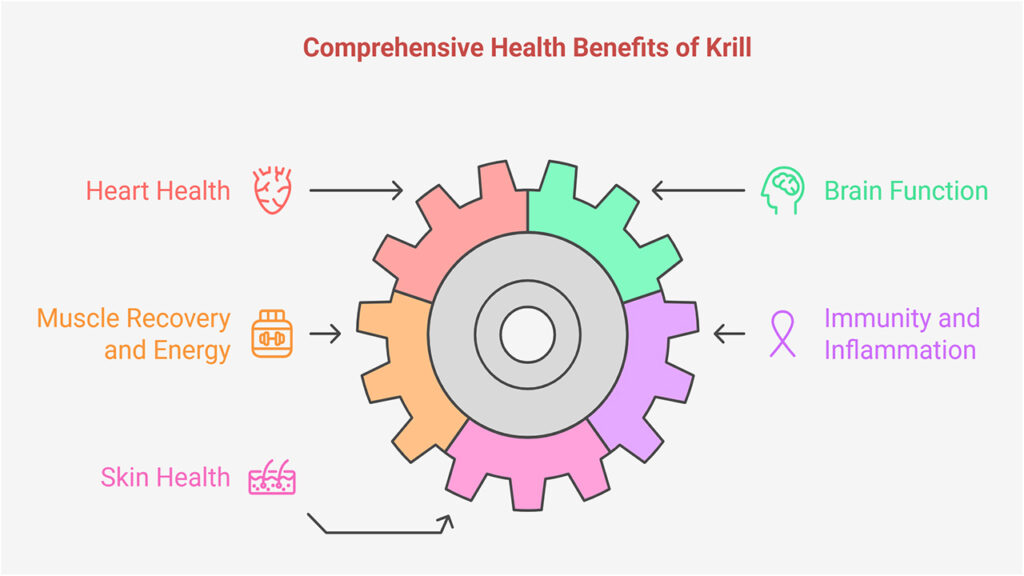
Heart Health
Omega-3s are well-known for supporting heart health, but krill takes it a step further. Unlike fish oil, krill’s omega-3s are bound to phospholipids, making them easier to absorb and more effective.
- Helps maintain healthy cholesterol levels by increasing good HDL cholesterol and reducing bad LDL cholesterol.
- Supports circulation by keeping blood vessels flexible and promoting better oxygen flow.
- Fights inflammation that contributes to heart disease and high blood pressure.
Brain Function: Better Memory, Focus, and Mental Clarity
Your brain is made up of nearly 60% fat, and omega-3s play a critical role in keeping it sharp. Krill provides highly absorbable DHA and EPA, which help:
- Improve memory and cognitive function, especially as you age.
- Reduce brain fog and enhance focus, making it easier to stay alert throughout the day.
- Protect against age-related decline, with studies showing that regular omega-3 intake may help slow cognitive aging.
Since krill also contains astaxanthin, it provides extra protection against oxidative stress, which can damage brain cells over time. Think of it as a natural defense system for your mind.
Muscle Recovery and Energy
Protein isn’t just about building muscle it’s about repairing tissues, maintaining strength, and keeping energy levels stable. Krill delivers a highly digestible protein source, meaning your body absorbs and uses it quickly.
- Faster muscle recovery after workouts or physical activity.
- Sustained energy levels, without the sluggishness that can come from heavier protein sources.
- Better endurance and strength, thanks to the combination of amino acids and omega-3s that support muscle function.
Stronger Immunity and Reduced Inflammation
Chronic inflammation is linked to many health problems, from joint pain to a weakened immune system. Krill’s astaxanthin and omega-3s work together to fight inflammation, keeping your body resilient and ready to fight off illness.
- Astaxanthin is a powerhouse antioxidant that helps cells stay strong and healthy.
- Omega-3s naturally reduce inflammation, helping with joint pain and injury recovery.
- Supports a strong immune response, so your body can better handle stress, infections, and seasonal illnesses.
Skin Health and Anti-Aging Benefits
Your skin is the largest organ in your body, and what you eat directly impacts how it looks and feels. Krill’s combination of omega-3s and astaxanthin provides a natural way to keep skin hydrated, elastic, and youthful.
- Reduces dryness and improves hydration, helping skin stay soft and smooth.
- Protects against UV damage, reducing the effects of sun exposure.
- Fights signs of aging, as astaxanthin helps prevent wrinkles by reducing oxidative stress in skin cells.
Why Krill is a Sustainable Seafood Choice
Eating seafood shouldn’t come at the cost of harming the ocean. With overfishing depleting fish stocks and many seafood sources facing sustainability challenges, consumers are looking for better choices. That’s where krill stands out it’s not only a powerhouse of nutrition but also one of the most responsibly harvested marine resources.
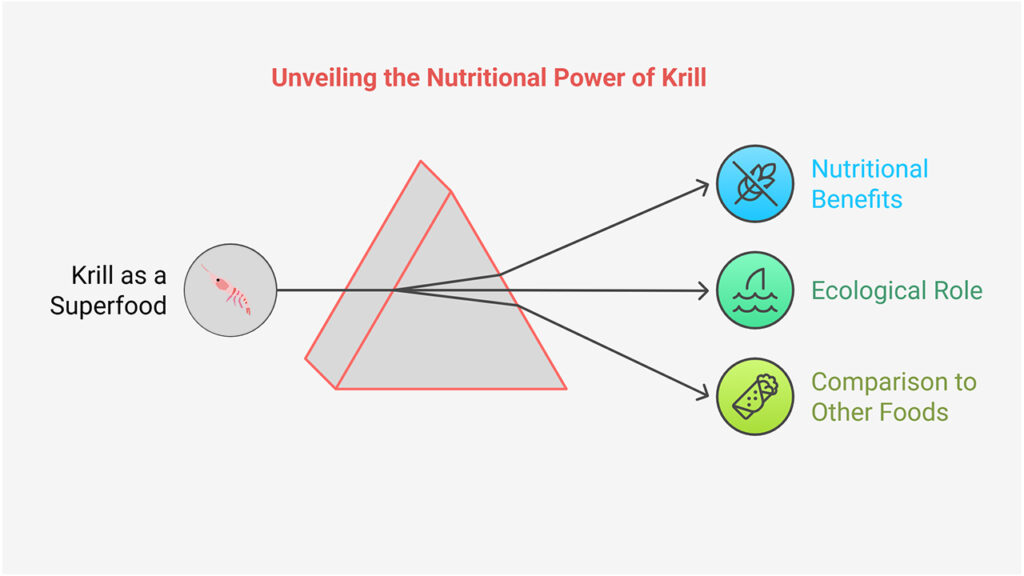
Harvested Under Strict Sustainability Regulations
Unlike many overfished species, krill is harvested under some of the most carefully managed regulations in the seafood industry. The Commission for the Conservation of Antarctic Marine Living Resources (CCAMLR) sets strict guidelines to ensure krill harvesting remains sustainable.
- Less than 1% of the total krill population is harvested annually, keeping populations stable.
- Fishing is limited to specific areas, ensuring enough krill remains available for whales, seals, and penguins that rely on them for food.
- Real-time monitoring is used to prevent overfishing and protect the Antarctic ecosystem.
This careful management ensures that krill populations remain healthy while still allowing humans to benefit from this nutrient-rich seafood.
Krill Reproduces Quickly, Keeping Populations Strong
One reason many fish species struggle with overfishing is slow reproduction rates. Some large fish take years to mature, and when too many are caught too quickly, populations collapse.
Krill, on the other hand, reproduces in massive numbers, with billions of new krill hatching each season. This natural abundance makes krill one of the most sustainable seafood sources available, as responsible harvesting doesn’t disrupt long-term population stability.
A Cleaner Seafood Choice with Minimal Environmental Impact
Many large fish accumulate mercury, heavy metals, and other toxins over time due to their position higher up in the food chain. Krill, being at the bottom of the food chain, feeds on microscopic algae, making it naturally low in contaminants.
Additionally, krill fishing has a much lower environmental footprint compared to traditional seafood sources.
- No large-scale habitat destruction like bottom trawling, which damages ocean floors.
- Less bycatch krill fishing methods are highly targeted, meaning other marine species aren’t unintentionally caught in large numbers.
- Efficient processing on vessels, reducing waste and ensuring that nearly all harvested krill is used.
A Sustainable Alternative to Overfished Species
Many of the world’s most popular seafood options like tuna, cod, and shrimp are facing serious sustainability challenges. Overfishing, habitat destruction, and pollution have made it harder to maintain healthy fish populations.
By choosing krill, consumers can reduce demand for overfished species while still getting a high-quality protein and omega-3 source. Since krill is harvested far from polluted coastlines and industrial fishing zones, it remains one of the cleanest and most responsibly sourced seafood choices.
Krill offers a win-win it’s nutrient-rich, responsibly harvested, and environmentally friendly. With strict harvesting limits, low contamination levels, and minimal ecological impact, krill is leading the way in sustainable seafood.
How to Incorporate Krill into Your Diet
Krill isn’t just a sustainable seafood choice it’s also incredibly versatile. Whether you prefer whole foods or supplements, there are easy and delicious ways to add krill to your diet. From krill meat to krill oil, here’s how you can start benefiting from this nutritional powerhouse.
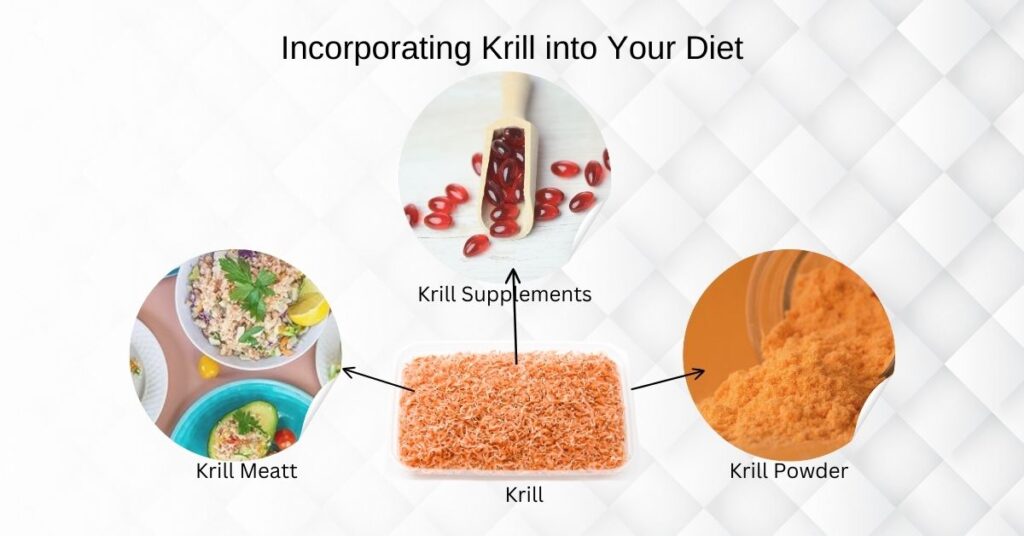
Krill Meat: A Versatile Ingredient for Everyday Meals
Krill meat has a mild, slightly sweet flavor, similar to shrimp but more delicate. It can be used in a variety of dishes without overpowering other ingredients. If you enjoy seafood, adding krill to your meals is an easy way to boost protein and omega-3 intake without changing your diet drastically.
- Salads: Sprinkle krill meat over a fresh green salad for a protein-packed, nutrient-rich topping.
- Soups and stews: Add krill to seafood chowder or miso soup for a burst of flavor and extra omega-3s.
- Stir-fries and pasta dishes: Sauté krill with garlic, olive oil, and vegetables, or toss it into pasta for a light, nutritious meal.
- Sushi and rice bowls: Use krill meat as a sushi filling or mix it into a poke-style rice bowl with avocado, cucumber, and soy sauce.
- Krill patties: Blend krill meat with breadcrumbs, eggs and seasonings to create krill cakes similar to crab cakes but more nutritious.
Krill-Based Supplements: An Easy Alternative
If cooking with krill meat isn’t for you, krill oil supplements offer a convenient way to get the same powerful nutrients without changing your meals.
- Krill oil capsules provide highly absorbable omega-3s, astaxanthin, and essential fatty acids in a concentrated form.
- Unlike traditional fish oil, krill oil doesn’t leave a fishy aftertaste and is easier to digest.
- Just one small capsule a day can deliver the same heart, brain, and joint health benefits as eating regular servings of seafood.
Krill Powder: A Nutrient Boost for Smoothies and Snacks
For those who prefer a plant-based or blended approach, krill powder is a great addition to shakes, smoothies, and even protein bars.
- Add it to smoothies for an extra boost of protein and omega-3s without altering the taste.
- Mix it into homemade protein bars or energy balls to improve nutrition on the go.
- Blend it into sauces or spreads for an easy way to sneak in more nutrients without changing the texture of your food.
Making Krill a Part of Your Routine
Whether you choose krill meat, krill oil, or krill powder, adding this superfood to your diet is simple and rewarding. It’s a clean, sustainable protein source that fits into almost any lifestyle whether you’re an athlete looking for better recovery, someone focused on heart and brain health, or just searching for a cleaner, more effective source of omega-3s.
Conclusion: The Smart Choice for Nutrition and Sustainability
Bigger doesn’t always mean better, and krill proves it. These tiny crustaceans pack more nutrition, sustainability, and efficiency into every bite than many of the seafood options we’ve relied on for years. Whether you’re looking for superior omega-3s, highly digestible protein, or powerful antioxidants, krill delivers it all in a way that’s better for your body and the planet.
Unlike larger fish that carry risks of mercury and overfishing, krill is clean, responsibly harvested, and naturally abundant. It’s easier for your body to absorb the nutrients it needs. Its astaxanthin content fights inflammation and aging. And as a protein source, krill supports muscle recovery and energy with better digestibility.
But there’s more krill isn’t just good for you, it’s one of the most sustainable seafood choices available. Harvested under strict regulations with a minimal environmental footprint, krill offers a way to support ocean health while getting the nutrition your body craves.
If you’re looking for a smarter, cleaner, and more effective way to fuel your body, krill is the answer.

